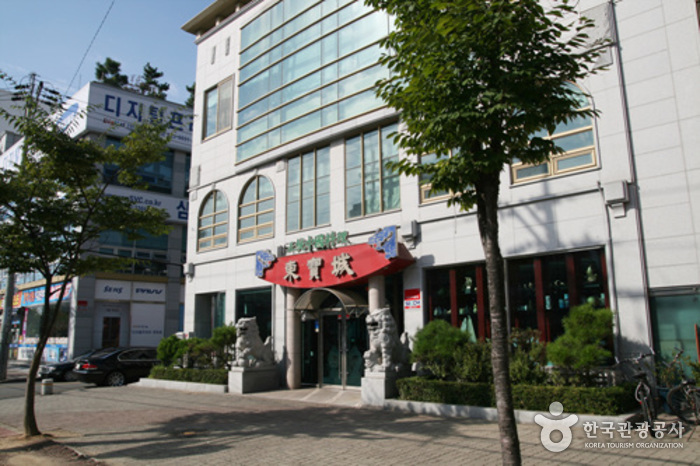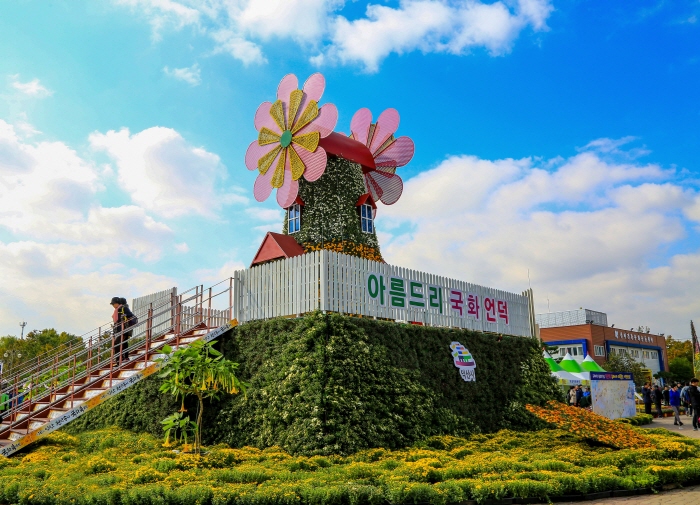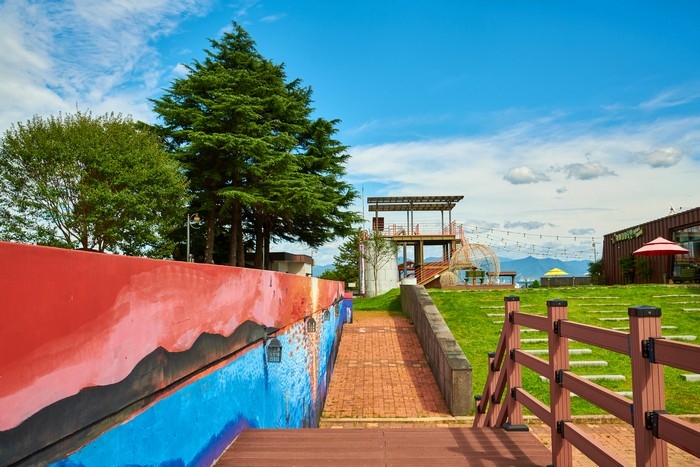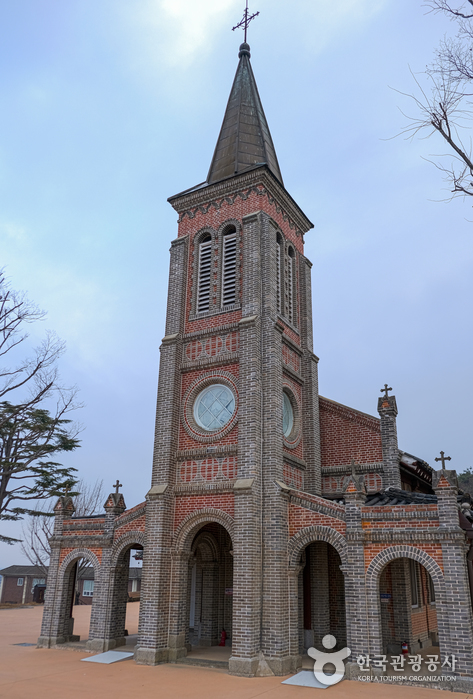Archaeological Site in Wanggung-ri [UNESCO World Heritage] (익산 왕궁리유적 [유네스코 세계문화유산])
5.0Km 26592 2024-04-07
666, Gungseong-ro, Iksan-si, Jeonbuk-do
+82-63-859-4631
Archaeological Site in Wanggung-ri, designated as Historic Site No. 408 on September 17, 1998, has a surface area of 216,862 square meters. The site has various structures and artifacts from Baekje dynasty to unified Silla period. Artifacts were found within the rectangular-shaped fortress site that surrounds Wanggungri Five-story Stone Pagoda, National Treasure No. 289.
Wanggung Dawon (왕궁다원)
6.6Km 0 2024-04-07
21-5 Sagok-gil, Wanggung-myeon, Iksan-si, Jeonbuk-do
Wanggung Dawon is a hanok café built in the 1800s. It was once the residence of Song Byungwoo, a rich person in the region, and has been operating as a traditional tea house since 2008, preserving the charm of the old hanok. The café offers a wide variety of teas, with the signature menu item being ssanghwatang (herbal tonic tea), a traditional Korean beverage. Ssanghwatang is made with ingredients such as jujube, ginseng, and chestnuts, known for its warming properties.
Dongboseong (동보성)
7.2Km 4757 2024-04-07
437, Hana-ro, Iksan-si, Jeonbuk-do
Dongboseong is an authentic Chinese restaurant serving dishes prepared by a number of chefs from China. It has separate rooms and large banquet rooms for group dining.
Iksan Ten Million Chrysanthemum Festival (익산천만송이국화축제)
7.9Km 28195 2024-04-06
322 , Hana-ro, Iksan-si, Jeonbuk-do
• 1330 Travel Hotline: +82-2-1330 (Korean, English, Japanese, Chinese) • For more info: +82-63-859-4977, 4334
The annual Iksan Ten Million Chrysanthemum Festival is held every year from late October to early November. The festival features an outdoor chrysanthemum exhibit, city agricultural hall, cultural performances, music fountain and much more as well as food.
Evergreen Hotel (에버그린 관광호텔)
12.0Km 8114 2020-03-30
369, Hwanghwa-ro, Nonsan-si, Chungcheongnam-do
+82-41-742-3344
Evergreen Hotel is the only tourist hotel in Nonsan. The hotel has 40 comfortable rooms and 2 banquet halls, a seminar room, coffee shop, live café, buffet, and sauna.
Wanju Samrye Culture & Arts Village (완주 삼례문화예술촌)
12.2Km 3319 2024-04-07
81-13, Samnyeyeok-ro, Wanju-gun, Jeonbuk-do
+82-63-290-3862
Samrye Culture & Arts Village is an art village also referred to as "Samsamyeyemimi." Once used as a granary and an official residence during the Japanese administration, it has now become a village of art. The village consists of Design Museum, Visual Media Art Gallery, Kim Sang-rym Carpentry Shop (Wood Works), and Book Museum and offers a variety of programs during exhibition events and art festivals.
Sunshine Land (선샤인랜드)
12.3Km 0 2024-07-09
102 Bonghwang-ro, Yeonmu-eup, Nonsan-si, Chungcheongnam-do
Sunshine Land is a cultural complex located in Nonsan, Chungcheongnam-do. One can experience and observe diverse content at this themed attraction, which is divided into four sections: Survival Experience Center, Military Experience Center, Sunshine Studio, and 1950 Studio. The Survival Experience Center and Military Experience Center incorporate VR technology for an interactive and realistic entertainment. The Sunshine Studo and 1950 Studio are decorated in the theme of the aftermath of the Korean War, allowing one to get a glimpse and knowledge of what life in Korea was like after the war.
Iksan Sungnimsa Temple (숭림사(익산))
12.7Km 7496 2024-04-07
495-57, Baekje-ro, Iksan-si, Jeonbuk-do
+82-53-862-6394
Sungnimsa Temple is one of the major temples in Iksan under Geumsansa Temple and was believed by some to have been built by monk Jinpyo Yulsa during the reign of King Gyeongdeok (742-764) during the Silla period. Others believe that the temple was established during the first year of King Chungmok of the Goryeo dynasty in 1345. Sungnimsa Temple was named in honor of great monk Bodhi-Dharma, who practiced seated Zen meditation for nine years at Sorimsa Temple located deep inside Sungsan Mountain in China. The temple was burnt down during the Imjin War (1592-1598), leaving only Bogwangjeon Hall. Bits and pieces of the temple were later restored in 1697, 1819, and 1892.
Bibinakan (비비낙안)
12.8Km 0 2024-07-18
26 Bibijeong-gil, Samnye-eup, Wanju-gun, Jeonbuk-do
Climbing the steep stairs leading to Bibinakan affords one a view of the open lawn and view of the cafe where BTS members sat comfortably. The scenery of Wanju and the leisurely flow of the Mangyeonggang River as well as downtown Jeonju can be seen in a panoramic view without obstruction. Especially when the sun goes down, the sunset over the river is spectacular scenery.
Nabawi Catholic Church (화산천주교회(나바위 성당))
14.3Km 9117 2024-04-07
146, Nabawi 1-gil, Iksan-si, Jeonbuk-do
+82-63-861-9210
Nabawi Catholic Church is located in Hwasan-ri, Mangseong-myeon in Iksan, Jeollabuk-do Province and is known as the oldest surviving catholic church in the Jeolla-do region. The church was built in 1906 to commemorate the return of priest Kim Dae-geon in 1845 (Joseon dynasty) after he was ordained in Shanghai, China. Inside the church stand two monuments: one built in 1954 to honor Joseph Vermorel (French missionary, 1860-1937) and one built in 1955 to honor priest and martyr Kim Dae-geon. Considered the most significant catholic relic of the Jeolla-do region, the church is sought out by large numbers of Catholic visitors each year.
![Archaeological Site in Wanggung-ri [UNESCO World Heritage] (익산 왕궁리유적 [유네스코 세계문화유산])](http://tong.visitkorea.or.kr/cms/resource/97/2514197_image2_1.jpg)





 English
English
 한국어
한국어 日本語
日本語 中文(简体)
中文(简体) Deutsch
Deutsch Français
Français Español
Español Русский
Русский